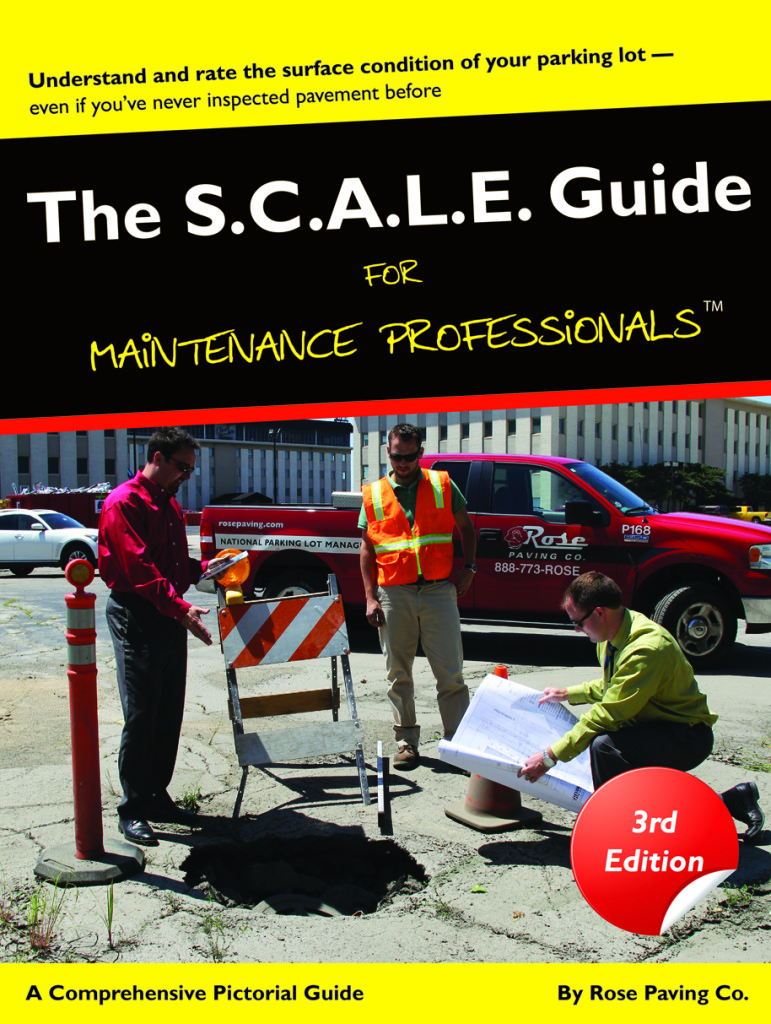Rose Paving Company’s Pavement Maintenance Guide – 3rd Edition
Rose Paving produced the S.C.A.L.E. (Seal coating, Crack sealing, Asphalt, Lot marking Evaluation) Guide back in 2007 to help explain the lifecycle of a parking lot including probable wear and tear along with maintenance techniques to maximize pavement condition. Now, with our 3rd Edition ready for release, we thought we would include a little bit of information you can find inside:
1. Perform a physical inventory on your parking lot
Walk your parking lot and pay careful attention to areas of automotive and pedestrian traffic flow, entrances and exits, drainage, islands, delivery zones, and dumpsters. Depressions, rutting, cracking by type and severity, potholes, and asphalt or concrete repairs should be noted.
2. Evaluate and categorize pavement defects
Create a diagram of your parking lot and identify the pavement condition of each section. From the diagram, determine which defects must be repaired immediately (i.e. repairs in high traffic areas, regardless of severity, should take priority over fixing a defect in an isolated area) and then rank the remaining defects accordingly.
3. Prioritize treatments by identifying the most cost-effective and/or timely repairs
A reputable contractor will help you model pavement condition based on various rehabilitation strategies (preventative and/or structural maintenance and timing) to determine future pavement condition and associated cost to reach the desired outcome. Strategies will be further adapted according to goals and funding unique to the property.
4. Understand the failure mechanism and what is causing it
This could be due to poor design or lack of maintenance; but, it can also result from excessive sprinkling, traffic, or salting; snow plow damage; or poor drainage.
For steps 5 and 6, more helpful pavement maintenance tips and to request a brand-new 3rd Edition Guide, click here or contact us at (888) 773-ROSE!




